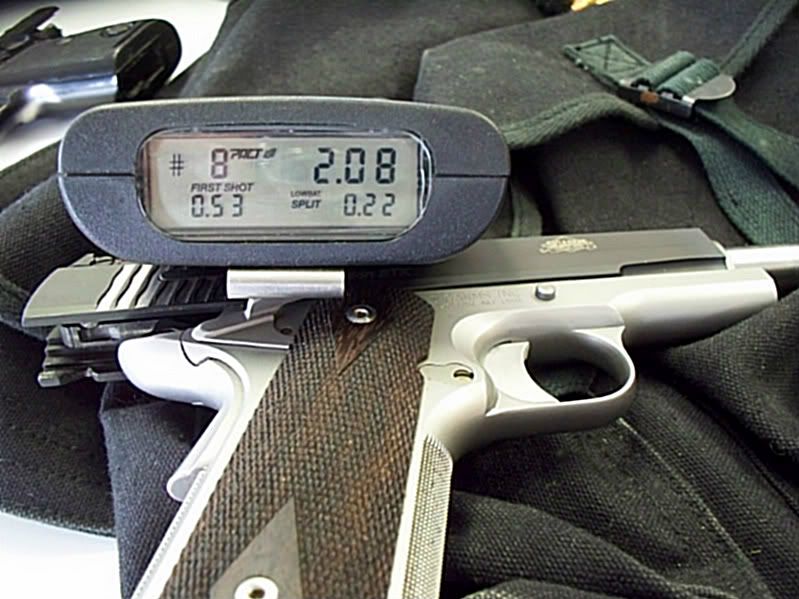Trust me, it can.
However, I think that there is a point to be made here that is being missed.
If you find yourself in the position where someone has the drop on you, and is threatening you with a drawn firearm, you are already in mortal danger. The person has means, motive and opportunity. Here is where the will to live; to win comes out. Here is the home and birthplace of what is called the warrior mindset.
So, what do you do? Just give your money up, and hope for the best? You've seen the robber's face. Will they let you walk away, and hope not to get caught?
They are issuing commands. Do you follow them meekly? Do you turn around? Go to your knees? Wait for the execution that may be coming?
This is what you MUST remember...
1. If you carry a gun, you must PRACTICE. This means that you put on and adjust your carry rig, wherever you're going to carry it. Then, you clear your weapon, REMOVE ALL LIVE AMMO FROM THE ROOM and practice the draw. Concentrate on SMOOTH, not speed. Speed will come with time.
Practice at LEAST 300 repetitions each day. It takes about 3000 reps to have the act grooved into your muscle memory.
2. Incorporate into your range time some draw and shoot practice. Here's how to do it safely...
a. Unload and load with snap caps.
b. Put up a target between 3 and 10 yards.
c. Practice that smooth, easy draw again. This time, practice drawing, coming immediately onto target and pulling the trigger. Dry-fire like this at least 100 times. Points to emphasize: the smooth draw, finger OFF the trigger until the gun goes on target, and the smooth trigger pressure, straight to the rear.
d. Now, load the gun. Practice drawing and firing one round at a time. After you shoot, scan for another threat--remember the +1 rule. After you draw and fire, and you can keep your rounds in the center of mass, start training to fire multiple rounds. Remember, you shoot to STOP.
e. The final step is to incorporate movement into your drill. When you have drawn, start moving. A couple of steps to either side will be enough to spoil someone's aim. Remember--everyone trains on stationary targets. Don't give them an easy target to shoot at.
Now, what's the other part of the warrior mindset? Simple...if you are confronted with the threat, ACTION beats REACTION.
Accept the possibility of having to take a hit. And, push into your mind that you will FIGHT through it at all costs.
Of course, an ounce of prevention is worth a pound of cure. be aware and alert of your surroundings. Look ahead when you're out for possible trouble areas. If you're out with someone else, do NOT let them block your gun hand by walking on the same side.
Most importantly--if you start trading shots, MOVEMENT IS YOUR FRIEND.
Do NOT fire more than two rounds without displacing yourself to the side, either direction, at least one or two steps.
Once again, accept the possibility of getting hit--but always resolve to fight through it, and to put your assailant down.

